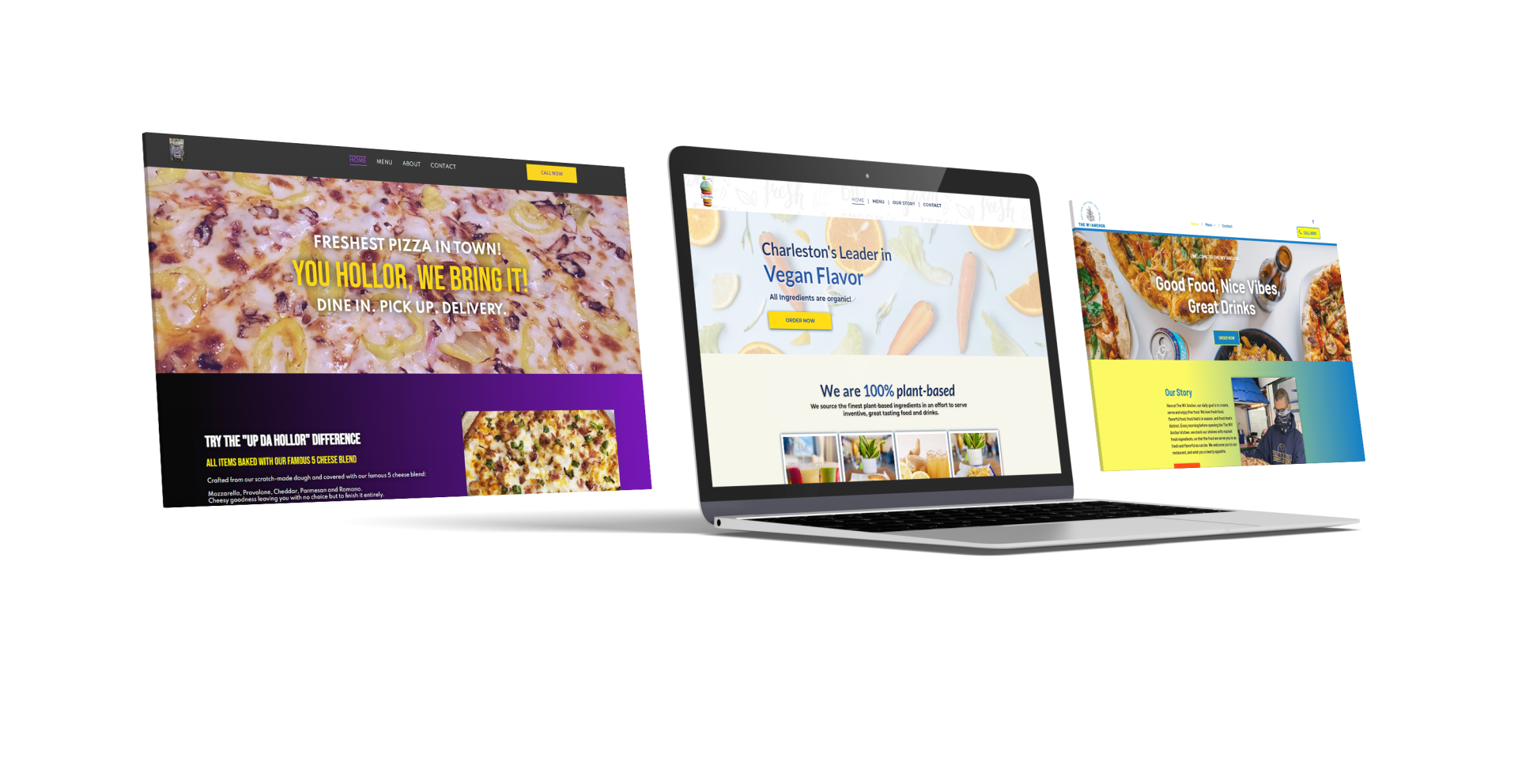Why Website Usability Matters
Why Website Usability Matters: Optimizing User-Friendly Navigation

Imagine being lured into a store by enticing window displays, only to find the interior is a disorienting maze with no clear paths to the products. Frustrating, isn’t it? This is why website usability matters in the online world. Much like physical spaces, digital places also need order and logic for smooth navigation. Essential to fostering customer satisfaction and eventually driving conversion rates, an optimized user-friendly interface should top every website owner’s priority list. Journey with us as we unpack how easy navigation can transform your site from a confusing labyrinth to a streamlined pathway to success.
Website usability refers to how easy it is for users to navigate a website, find what they're looking for, and interact with it. Good usability leads to higher engagement, while poor usability leads to frustration and lower engagement. Therefore, website usability is crucial for keeping users engaged and coming back for more. Aesthetics alone are not enough when it comes to attracting and retaining users
Importance of Website Usability
When it comes to websites, aesthetics alone are not enough. In today's digital age, website usability plays a vital role in attracting and retaining users. But what exactly is website usability? It refers to how easy it is for users to navigate a website, find what they're looking for, and interact with it. Website usability is directly tied to user engagement and creating a positive user experience.
Why does website usability matter? Well, let's consider this scenario: imagine you visit a website that takes forever to load, has confusing navigation, and contains cluttered content that makes it difficult to find information. Frustrating, right? You would likely abandon the site and look for alternatives that offer a better user experience.
Now, think of a time when you visited a website that was beautifully designed, had clear and organized navigation menus, and provided easily accessible information. This seamless experience encouraged you to explore more pages, spend more time on the site, and maybe even make a purchase or take some desired action.
Website usability is not only essential for attracting users but also keeping them engaged and coming back for more. It directly impacts user satisfaction and their likelihood of converting into customers or taking desired actions on the site.
Now that we understand the importance of website usability, let's explore its impact on user engagement.
- According to a Forrester Research study, a well-designed user interface could increase your website’s conversion rate by up to 200%, and a better UX design could yield conversion rates of up to 400%.
- In a report by Gomez.com and Akamai., nearly half (47%) of consumers expect a web page to load in 2 seconds or less, indicating that speed is crucial for usability.
- A research from Stanford University notes that 75% of users make judgments about a company’s credibility based on their website’s design, thereby emphasizing the role usability plays in determining business credibility.
Impact on User Engagement
Website usability goes hand in hand with user engagement. When visitors find a website easy to use and navigate, they are more likely to stay longer and interact with the content. This increased engagement can have several positive effects on your website.
Firstly, good usability leads to higher dwell time. Dwell time refers to the length of time users spend on a webpage before returning to search results. Search engines interpret increased dwell time as a signal of content relevance and quality. Consequently, it could boost your website's visibility in search results.
Let's say you have a blog post that provides valuable information and is presented in a user-friendly format. Users who land on that page will find it easy to read, scroll through, and engage with the content. They might spend several minutes engrossed in the article, increasing the dwell time and indicating to search engines that your content is relevant and valuable.
Secondly, good usability encourages users to explore more pages on your website. Clear navigation menus, intuitive layouts, and well-organized content make it effortless for users to navigate from one page to another. This helps them discover related information or products/services they may be interested in.
Consider an e-commerce website with excellent usability. If a user lands on the homepage and finds it easy to use, they are more likely to continue browsing different product categories, adding items to their cart, and ultimately making a purchase.
Lastly, good usability facilitates better accessibility and indexability by search engines. When your website is designed with usability in mind – clear headings, descriptive URLs, proper use of tags – search engines can easily understand and index your content. This improves your chances of ranking higher in search results and generating organic traffic.
Website usability goes beyond just delivering a positive user experience; it also has implications for SEO rankings. In the next section, we will explore the influence of website usability on SEO ranking.
- Good website usability leads to higher user engagement, which can have positive effects on search engine visibility, dwell time, page exploration, and indexability. A user-friendly website encourages users to stay longer, navigate through more pages, and engage with the content. It also facilitates better accessibility and indexability by search engines. Therefore, it is crucial for website owners to prioritize usability in their design and development process to improve user experience and SEO performance.
Influence on SEO Ranking
In the vast world of the internet, where billions of websites compete for user attention, search engine optimization (SEO) plays a pivotal role in ensuring your website ranks higher in search results. One crucial aspect of SEO that directly impacts website visibility and traffic is website usability. But how exactly does website usability affect SEO ranking?
Google and other search engines employ various ranking factors to determine how well a website matches a specific search query. With over 8.5 billion searches happening on Google each day, it becomes increasingly important for businesses and website owners to rank higher in search results.
The most significant ranking factors for improving a website's position in search results include high-quality content, backlinks, search intent and content relevancy, website loading speed, mobile friendliness, domain authority, keyword optimization, website structure, website security, and on-page experience. However, one often overlooked factor that can significantly impact SEO ranking is the usability of your website.
Let's consider an example. Imagine two websites that both offer similar products or services. Website A has a cluttered homepage with confusing navigation menus and slow loading times. On the other hand, Website B has a clean and well-organized layout with intuitive navigation and fast page speeds.
Which website do you think will perform better in terms of SEO ranking? The answer is Website B. Search engines like Google prioritize delivering great user experiences to their users. If your website provides a seamless browsing experience with easy navigation and quick access to information, it is more likely to be ranked higher.
Moreover, high-quality content alone may not be enough if users struggle to find what they are looking for due to a lack of user-friendly navigation. By optimizing your website's usability, you create an environment that encourages users to stay longer on your site, explore more pages, and engage with your content. This increased user engagement signals to search engines that your website provides valuable and relevant information, leading to higher SEO ranking.
With a clear understanding of how website usability affects SEO ranking, let's now explore the importance of conducting effective usability tests to ensure a user-friendly experience for your website visitors.
Conducting Effective Usability Tests
Usability testing is a vital component of creating and optimizing user-friendly websites. It involves evaluating how real users interact with your website to identify potential issues and improve its overall usability. By conducting effective usability tests, you can gain valuable insights into users' experiences, preferences, and pain points.
To start with, it's crucial to define clear objectives for your usability tests. Ask yourself what specific aspects of your website you want to evaluate and improve. Are you interested in testing the navigation menu, checkout process, or overall layout? Having a clear direction will help you design targeted test scenarios that align with your goals.
Once you've defined your objectives, recruit a diverse group of participants who resemble your target audience. This ensures that the feedback and insights gained from the usability tests accurately represent the needs and preferences of your actual users.
During the usability tests, provide clear instructions to participants on the tasks they need to perform while observing their interactions. This can range from navigating through specific pages to completing purchases or finding certain information. Observe their behavior closely and encourage them to think aloud, articulating their thoughts and frustrations as they navigate through your website.
After collecting data from your usability tests, analyze the results to uncover common patterns or recurring issues that hinder user satisfaction and engagement. Use this information to make data-driven improvements to your website's design, layout, navigation, and overall user experience.
Think of conducting usability tests as being similar to test-driving a car before making a purchase. By trying out different functionalities and assessing its ease of use, you can determine whether it meets your needs effectively.
Now that you understand the importance of conducting effective usability tests, let's explore some tips to ensure successful testing and maximize the insights gained.

Tips for Successful Testing
When it comes to website usability, testing is an essential component of the optimization process. It provides valuable insights into how users interact with your site and helps identify areas that need improvement. To ensure successful testing, consider the following tips:
- Define clear objectives: Before diving into testing, clearly define what you aim to achieve. Are you trying to identify navigation issues, improve user flow, or optimize conversion rates? Having specific goals in mind will guide your testing approach and help you focus on relevant areas.
- Choose the right testing methods: There are various testing methods available, each suited for different purposes. Usability testing involves observing users as they navigate through your website and gathering their feedback. A/B testing compares two versions of a webpage to determine which one performs better. Heatmap and click tracking tools provide visual representations of user behavior. Choose the methods that align with your objectives to gather meaningful data.
- Recruit diverse participants: Ensure that your pool of test participants represents your target audience as closely as possible. This diversity will provide valuable insights into how different users interact with your site. Consider factors like age, gender, technical proficiency, and familiarity with your industry or product.
- Create realistic scenarios: To make testing more effective, design scenarios that mimic real-world situations users could encounter on your website. This allows participants to engage with the site as they would naturally, providing you with more accurate feedback and observations.
- Pay attention to quantitative and qualitative data: While quantitative data (such as conversion rates or time spent on page) provides numerical insights, qualitative data (gathered through interviews or open-ended questions) offers valuable context and depth of understanding. Balancing both types of data will give you a comprehensive view of the usability issues at hand.
- Iterate and retest: Website usability is an ongoing process, so don't expect perfection after a single round of testing. Take the insights gathered and make iterative improvements to your site's design and functionality. Retesting at regular intervals will ensure that your optimizations are effective and continue to meet the evolving needs of your users.
For example, imagine you conducted usability testing on your e-commerce website and discovered that customers were struggling to find the "Add to Cart" button. Armed with this insight, you can iterate your design by making the button more prominent or repositioning it to improve user flow. By retesting after implementing these changes, you can measure their impact on usability.
By following these tips, you can maximize the effectiveness of your testing efforts and make informed decisions when optimizing your website for usability. Now let's explore how to optimize site design itself to enhance user experience.
Optimizing Site Design for Usability
Creating a visually appealing website is essential, but equally important is ensuring that it is user-friendly and easy to navigate. Here are some key strategies for optimizing site design for usability:
- Clear navigation: Users should be able to easily find what they're looking for on your website. Ensure that your navigation menu is well-organized and prominently displayed in a consistent location across all pages. Use clear labels and hierarchical structures to guide users without overwhelming them.
- Responsive design: With the increasing use of mobile devices, it's crucial to have a responsive website that adapts seamlessly to different screen sizes. Test your website on various devices and optimize its layout to provide a smooth and intuitive experience across platforms.
- Fast loading times: In today's fast-paced digital landscape, users have little patience for slow-loading websites. Optimize image sizes, reduce unnecessary scripts, and leverage caching techniques to ensure lightning-fast load times. This will minimize user frustration and improve overall satisfaction.
- Consistent branding: Maintain visual consistency throughout your website by using a cohesive color scheme, typography, and imagery. This creates a sense of familiarity and reinforces your brand identity, enhancing user trust and recognition.
- Accessible design: Accessibility should be a priority in web design to ensure inclusive user experiences. Consider factors such as strong color contrast for readability, functional alt tags for images, and clear focus indicators for users navigating with keyboard-only or assistive technologies.
- Engaging visuals: While usability is crucial, don't neglect the power of engaging visuals. Use high-quality images, videos, and graphics strategically to enhance the user experience and communicate your brand message effectively.
By implementing these strategies, you can optimize your site design for usability, resulting in higher engagement, improved conversion rates, and satisfied users who will keep coming back for more.
Principles of Intuitive Interface Creation
When designing a website, it's crucial to prioritize user experience and ensure that the interface is intuitive and easy to navigate. By following certain principles of intuitive interface creation, you can enhance usability and create a seamless browsing experience for your visitors.
Imagine visiting a website where the navigation menu is cluttered with confusing labels and submenus. It becomes challenging to find the desired content, leading to frustration and potentially driving visitors away. On the other hand, consider a website with clear and concise navigation, guiding users effortlessly through the various sections. This streamlined approach is possible by adhering to the following principles:
1. Consistency: A consistent interface creates familiarity and helps users understand how different elements function across various pages. Consistency applies to design elements such as color schemes, typography, and layout.
2. Simplicity: Keep the interface clean and uncluttered to avoid overwhelming users. Use whitespace effectively to provide breathing room between different elements. Avoid excessive use of flashy animations or distracting features that might hinder navigation.
3. Clear Hierarchy: Establish a clear hierarchy in your design by prioritizing important elements and categorizing content logically. Implement visual cues like headings, subheadings, and breadcrumbs to guide users through the information architecture.
4. Visual Feedback: Provide instant feedback when users interact with elements on your website. This feedback can be in the form of hover effects, click animations, or transitions that communicate actions being performed.
5. Predictability: Users appreciate predictability in navigation patterns as it allows them to navigate without constantly second-guessing their next steps.
Remember, these principles are not exhaustive but serve as a starting point for creating an intuitive interface that ensures seamless navigation and improves user satisfaction.
Now that we understand the importance of intuitive interface creation let's explore how enhancing usability through accessible content and navigation plays a vital role in optimizing user-friendly websites.
Enhancing Usability Through Accessible Content and Navigation
Imagine visiting a website where the text is so small that you strain your eyes to read it, or the navigation links are inaccessible for individuals using screen readers. This kind of experience highlights the importance of making web content and navigation accessible to all users, regardless of their abilities or disabilities.
To enhance usability through accessible content and navigation, consider the following:
1. Text Accessibility: Ensure that text is legible and easy to read by using appropriate font sizes, contrast ratios, and clear typography. Consider offering text resizing options for users who require larger text.
2. Alternative Text for Images: Provide descriptive alternative text (alt text) for images so that individuals using screen readers can understand the content.
3. Keyboard Accessibility: Design your website to be fully navigable using a keyboard alone, as some individuals may have limited dexterity or rely on assistive technology.
4. Clear Labels and Instructions: Use clear, concise labels and instructions for form fields, buttons, and other interactive elements. Avoid jargon or complex language that might confuse users.
5. Consistent Layout: Maintain consistency in layout across different pages to help users quickly locate information they are looking for.

By implementing these practices, you ensure that your website is more inclusive and can be accessed and used by a wider range of individuals. Not only does this benefit users with disabilities, but it also improves the overall user experience for everyone.
-
How does website usability affect search engine optimization (SEO)?
Website usability plays a crucial role in search engine optimization (SEO). When a website is user-friendly and provides easy navigation, it enhances the overall user experience. Search engines prioritize user-friendly websites in their rankings because they want to provide the best results to their users. According to a study by HubSpot, 94% of first impressions are design-related, highlighting the significance of website usability in attracting and retaining visitors, ultimately benefiting SEO efforts.
-
How does website usability impact user experience?
Website usability directly impacts user experience as it determines how easily users can navigate and interact with a website. A user-friendly design ensures visitors can find the information they need quickly, leading to increased engagement, longer visit durations, and higher conversion rates. According to a study conducted by Adobe, 39% of visitors will stop engaging with a website if it takes too long to load or is difficult to navigate. Thus, investing in website usability optimization is crucial for providing a positive user experience and achieving business goals.
-
What methods can be used to improve website usability?
There are several methods to improve website usability. First, optimizing navigation by using clear labels and logical categorization helps users find information easily. Second, implementing responsive design ensures a seamless experience across devices. Third, conducting user testing and collecting feedback to make iterative improvements is crucial. Finally, considering accessibility features such as alt-text descriptions for images and captions for videos enhances usability for all users. Studies have shown that 88% of online consumers are less likely to return to a site after a bad user experience, emphasizing the importance of improving website usability.
-
Are there any industries or types of websites where usability is especially important?
Yes, there are several industries and types of websites where usability is especially important. E-commerce websites, for example, rely heavily on user-friendly navigation to enhance the overall shopping experience and drive conversions. According to a study by Baymard Institute, poor website usability contributes to 70% of online shopping cart abandonments. Additionally, government websites need to prioritize usability to ensure that citizens can easily access essential services and information efficiently. Another industry where usability matters is healthcare, as patients need intuitive navigation to find medical resources and schedule appointments with ease. Overall, in today's digital age, usability is crucial across various sectors to provide a seamless user experience and achieve business objectives.
-
What are some common usability issues found on websites?
Some common usability issues found on websites include complicated navigation menus, slow loading times, excessive pop-ups and ads, poor mobile responsiveness, and lack of accessibility features. According to a study by Google, 53% of users will leave a website if it takes more than three seconds to load, highlighting the importance of optimizing loading times. Additionally, research shows that 88% of online consumers are less likely to return to a site after a bad user experience. These statistics emphasize the need for websites to prioritize usability in order to retain visitors and provide a positive user experience.
Website Usability is indeed important. After all, that's what your customer will use to get to know your business and the products or services you offer. If it's difficult for your target audience to navigate or use your site, chances are they might want to visit other sites.
Not sure about how to design your site? We can help. Just click the button below!

SEO Services
West Virginia
- Morgantown WV
- Huntington WV
- Martinsburg WV
- Parkersburg WV
- Wheeling WV
- Beckley WV
- Fairmont WV
- Clarksburg WV
- Princeton WV
Virginia
- Richmond VA
- Virginia Beach VA
- Alexandria VA
- Arlington VA
- Chesapeake VA
- Norfolk VA
- Fairfax VA
- Roanoke VA
- Fredericksburg VA
- Charlottesville VA
Ohio
- Columbus OH
- Cleveland OH
- Cincinnati OH
- Dayton OH
- Toledo OH
- Akron OH
- Canton OH
- Youngstown OH
- Dublin OH
- Westerville OH
Kentucky
- Louisville KY
- Lexington KY
- Bowling Green KY
- Paducah KY
- Owensboro KY
- Florence KY
- Elizabethtown KY
- Richmond KY
- Frankfort KY
- Ashland KY
North Carolina
- Charlotte, NC
- Raleigh, NC
- Durham, NC
New Jersey
- Morristown, NJ
- Jersey City, NJ
- Hoboken, NJ
- Long Beach Island, NJ
- Cherry Hill, NJ
Florida
- Orlando, Florida
- Tampa, Florida
- Jacksonville, Florida
Website Design Services
West Virginia
Virginia
Ohio
MAIN OFFICE
Have a question?
Email us
We will get back to you as soon as possible
Please try again later








